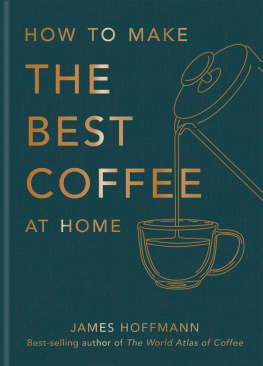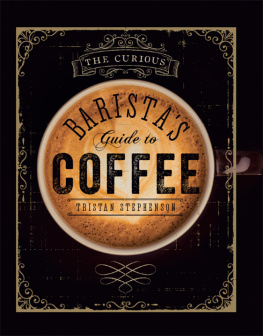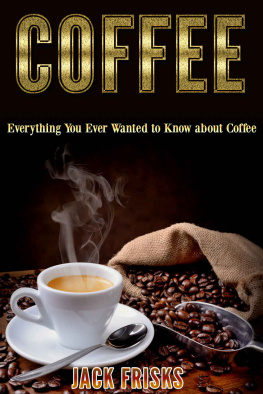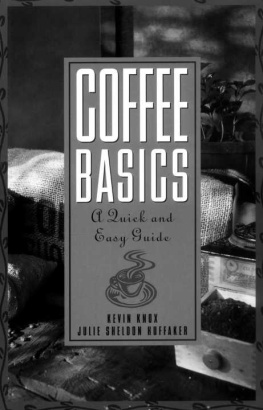Kevin Sinnott - The Art and Craft of Coffee: An Enthusiasts Guide to Selecting, Roasting, and Brewing Exquisite Coffee
Here you can read online Kevin Sinnott - The Art and Craft of Coffee: An Enthusiasts Guide to Selecting, Roasting, and Brewing Exquisite Coffee full text of the book (entire story) in english for free. Download pdf and epub, get meaning, cover and reviews about this ebook. year: 2010, publisher: Quarry Books, genre: Detective and thriller. Description of the work, (preface) as well as reviews are available. Best literature library LitArk.com created for fans of good reading and offers a wide selection of genres:
Romance novel
Science fiction
Adventure
Detective
Science
History
Home and family
Prose
Art
Politics
Computer
Non-fiction
Religion
Business
Children
Humor
Choose a favorite category and find really read worthwhile books. Enjoy immersion in the world of imagination, feel the emotions of the characters or learn something new for yourself, make an fascinating discovery.

- Book:The Art and Craft of Coffee: An Enthusiasts Guide to Selecting, Roasting, and Brewing Exquisite Coffee
- Author:
- Publisher:Quarry Books
- Genre:
- Year:2010
- Rating:4 / 5
- Favourites:Add to favourites
- Your mark:
The Art and Craft of Coffee: An Enthusiasts Guide to Selecting, Roasting, and Brewing Exquisite Coffee: summary, description and annotation
We offer to read an annotation, description, summary or preface (depends on what the author of the book "The Art and Craft of Coffee: An Enthusiasts Guide to Selecting, Roasting, and Brewing Exquisite Coffee" wrote himself). If you haven't found the necessary information about the book — write in the comments, we will try to find it.
Starred Review. Tracing the beverage from its first appearance in the Turkish and Saudi Arabian coffeehouses of the 1500s to the chains and boutique shops of today, Sinnotts guide to primo coffee enables readers to fill their cups to the rim... with greatness. Readers will learn the differing qualities of producing countries (good acidity but light body from Peru; the distinctive Liberica espresso from Laos), the particulars of roasting, and even the best times to buy and brew. Sinnott deftly navigates the thorny issues of production, preferring to focus on the enjoyment of the product. Even readers who dont know their Arabica from their Robusta or a French Press from a percolator will appreciate Sinnotts informative and egalitarian approach; suggestions are the order of the day, not mandates. Whether the barista-to-be prefers to create custom blends to roast at home in the hopes of an ultimate cup, or simply wants to get a better pot from the auto drip she bought for $20, Sinnotts guide will result in a better cup of joe. Photos.
ReviewSinnott, Kevin. The Art and Craft of Coffee: An Enthusiasts Guide to Selecting, Roasting, and Brewing Exquisite Coffee. Quarry: Quayside. Jun. 2010. 176p. photogs. bibliog. index. ISBN 978-1-59253-563-7. pap. $24.99. BEVERAGES
While there is a plethora of books on the history and economy of coffee, there are surprisingly few about enjoying coffee. With 200 color photos and friendly text, this highly readable and accessible coffee guide is divided into two sections, covering the beans and the brew. In addition to providing a general knowledge of coffee, Sinnott (curator, www.coffeecompanion.com) strives to give readers tools to prepare world-class coffee at home. Along with selecting, roasting, grinding, and brewing coffee, he discusses serving coffee-correct temperatures, using sugar and milk, and the equipment needed. Troubleshooting tips, charts, step-by-step instructions, and a variety of recipes add to the books usefulness and value.
Verdict For people just beginning to develop a home coffee habit, this is a better starting point than Kenneth Davidss _Coffee: A Guide to Buying, Brewing, and Enjoying_, but hard-core coffee fans will want both. - Xpress Review posted June 2010
Web Exclusive The Art and Craft of Coffee: An Enthusiasts Guide to Selecting, Roasting, and Brewing Exquisite Coffee
Kevin Sinnott, Quarry (Quayside, dist.), $24.99 (176p) ISBN 9781592535637
Tracing the beverage from its first appearance in the Turkish and Saudi Arabian coffeehouses of the 1500s to the chains and boutique shops of today, Sinnotts guide to primo coffee enables readers to fill their cups to the rim... with greatness. Readers will learn the differing qualities of producing countries (good acidity but light body from Peru; the distinctive Liberica espresso from Laos), the particulars of roasting, and even the best times to buy and brew. Sinnott deftly navigates the thorny issues of production, preferring to focus on the enjoyment of the product. Even readers who dont know their Arabica from their Robusta or a French Press from a percolator will appreciate Sinnotts informative and egalitarian approach; suggestions are the order of the day, not mandates. Whether the barista-to-be prefers to create custom blends to roast at home in the hopes of an ultimate cup, or simply wants to get a better pot from the auto drip she bought for $20, Sinnotts guide will result in a better cup of joe. Photos. (June)
Kevin Sinnott: author's other books
Who wrote The Art and Craft of Coffee: An Enthusiasts Guide to Selecting, Roasting, and Brewing Exquisite Coffee? Find out the surname, the name of the author of the book and a list of all author's works by series.










